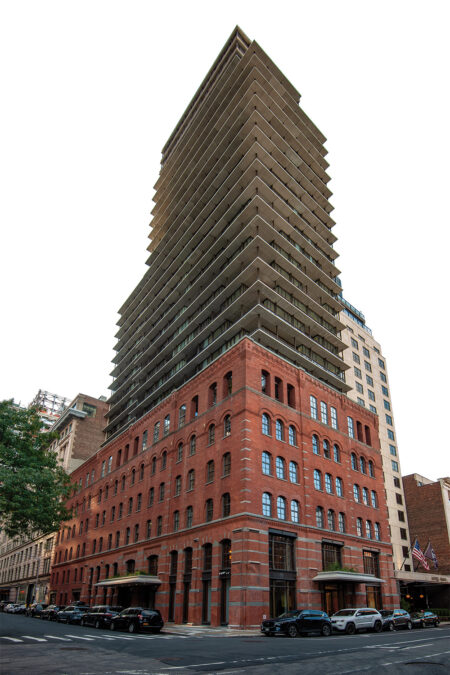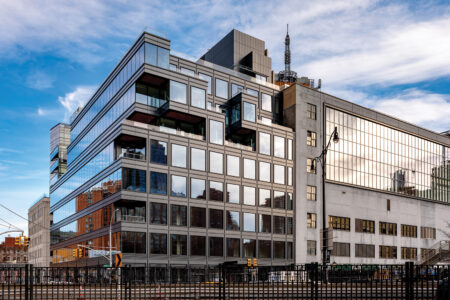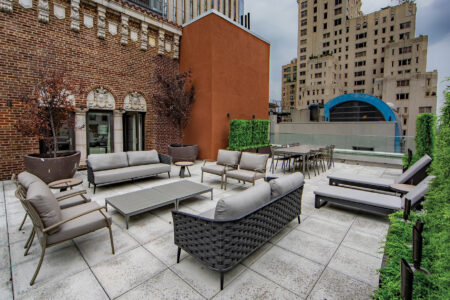

The office market has slowed but the demand for more urban housing only continues to rise. A possible solution? Converting office to residential. In a recent episode of STO Building Group’s Building Conversations podcast, Brooks McDaniel, STOBG’s senior vice president of building repositioning, speaks with Dan Shannon, commercial design leader and managing partner at architecture firm MdeAS, about the wave of office to residential conversions in New York City. Here is an excerpt of their conversation.
McDaniel: How would you describe the market for office-to-residential conversions in New York over the past few years?
Shannon: Brooks, what’s happening now is the commercial market is seeing a significant challenge. There are many factors on that, primarily a return-to-office transition that’s happened post pandemic as large commercial companies are beginning to get their hands around who’s coming back to the office and how people work effectively in the new modern workplace. On top of that is that a lot of the major players in commercial rental market have changed the quantity of office space they need, especially the tech sector, which had been pushing the growth throughout the pandemic. So as a result of those two primary factors and some other economic issues, there’s been a retreat on the quantity of office space that’s necessary in New York City. On top of that, there’s a lot of new product of office in the market as it’s necessary to keep a vibrant and competitive city in the world market.
So what are we going to do with available space in New York City? It starts with the word adapt. We, in an industry of construction, design and development, have to find ways for these properties to adapt to the market. And in one of those is residential conversions…. These buildings are big contributors to the economic vitality of this city, and they can’t stay empty. We have to find new uses for them.
McDaniel: There are several factors when you’re looking at a building and deciding whether it’s a good conversion target or not. I’ve always said that almost any building can be converted. It’s just how challenging it is…. I saw an interesting report recently published by Cushman and Wakefield called “Obsolescence Equals Opportunity,” which I think is a great title. And what they have determined is that 25% of the current office stock will be deemed obsolete by 2030. That’s 1.4 billion square feet across the country. I mean, huge, vast amounts of office space will need to be rethought and turned into something else….


Shannon: It’s an extraordinary number in the CW report. And, you know, there’s quite a bit of it here New York City. And if you think that the answer is to remove those buildings, that’s an enormous misunderstanding of the entire implication of these buildings. One of the greatest motivators for renovating and finding use of building to sustainability on every level. But the amount of energy it took to build that building and add nearly an equal amount to remove that building and try to find a place to put it afterwards when we can only recycle maybe 10 or 15% of the building is an enormous waste. Enormous, you know, the greenest, most sustainable
building ones that exist now, we can’t change the carbon that went into building them. We can change the carbon it takes to make them new again and not obsolete. Residential use is one of those great opportunities to do that….
Shannon: I don’t want to be mistaken that new buildings don’t have their place. But to take the hundreds of millions of square feet that exist today and to find a new life for them, I think is very gratifying. It’s a terrific opportunity to beat this obsolescence problem…. We’re working as much on how to get people back to work as we were on finding places for them to live that they hadn’t
before. And the combination of the two, I think, is going to make New York, unique and the future of this city a little bit different than what we were seeing a couple years ago.

